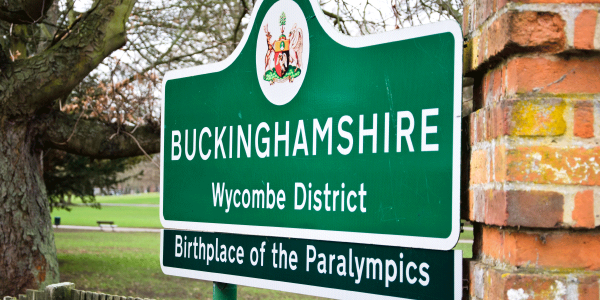- By Buckinghamshire Business First
- 16 July, 2019

Share by email
Buckinghamshire’s population rose by 4,141 in 2018 to reach 540,059.
At 0.8 per cent, the county’s annual rate of increase was the 4th highest among the 26 county council areas, ranking 6th among England’s 38 Local Enterprise Partnerships (LEPs). The median age of Buckinghamshire’s residents remained unchanged at 42 years while the number of residents per km2 rose to a new high of 345, ranging from 221 in Aylesbury Vale to 538 in Wycombe, compared to 457 in the South East region and 411 across England.
International migration made the largest contribution to the increase, with in-migration 1,601 higher than out-migration, ahead of natural change (1,438) and internal migration (996). At 4,264, international in-migration to Buckinghamshire was at its highest since 2006 and well above the average of 3,624 since 2002, while international out-migration rose to 2,663, the highest level since 2012 but still well below the average of 2,781 recorded since 2002.
Table 1: Demography, 2018

Source: MYPE, ONS, 2019
Aylesbury Vale’s population has risen by 10.3 per cent since 2013, an increase of 18,573 residents. This has been the 8th highest rate of growth among the 371 local authorities in Great Britain and the 20th highest absolute growth, ahead of the core cities of Manchester, Liverpool and Nottingham. The 3,428 increase estimated in Aylesbury Vale in 2018 represented a 1.7 per cent increase in the district’s population, the 8th highest rise in the country, representing 82.8 per cent of Buckinghamshire’s increase, having made up less than a third (31.2 per cent) in 2009. Since 2012, Aylesbury Vale’s population has risen by 10.3 per cent while the rest of Buckinghamshire has seen a rise of only 1.7 per cent, falling to 0.9 per cent in Wycombe.
In 2018, Buckinghamshire’s net in-migration from other parts of the UK stood at 996. The county has net internal in-migration for all five year cohorts from 0 to 49, except 15-19 year olds where the county saw out-migration of 2,450 in 2018 (or 7.8 per cent of all residents in that age range). From aged 45 onwards the county loses residents to other parts of the UK. Out-migration is particularly marked among 19 year olds, with 2,531 leaving the county in 2018, the most common destinations being the university towns of Nottingham (157), Oxford (116), Southampton (115), Birmingham (105), Coventry (74), Portsmouth (71), and Leeds (69). There is net out-migration to other parts of the UK for all ages from 47, with the top destinations for residents over 60 being dominated by neighbouring districts, but also including Scotland, Cornwall, Wiltshire and the New Forest.
Chart 1: Buckinghamshire’s domestic net migration by age, 2018

Source: MYPE, ONS, 2018
At 20.6 per cent, residents aged 0-15 make up a higher share of Buckinghamshire’s population than in any other county council area, ranking 5th among LEPs. In 2018, the number of Buckinghamshire residents in this age group rose by 1.3 per cent (1,432), taking the increase over the last five years to 6,781 or 6.5 per cent, the 2nd highest increase among county councils, ranking 6th among LEPs. Residents aged 65 and over rose by 1.6 per cent in the last year and have risen 10.0 per cent since 2013, more than double the county’s overall rate of growth and almost four times the rate of working age population increase. Over the last five years, Buckinghamshire has seen a 16.3 per cent (4,083) increase in the number of residents aged 80 and over, the highest rate recorded for both county councils and LEPs.
The number of working age residents (16-64) in Buckinghamshire rose by 1,080 or 0.3 per cent in 2018, the 7th highest rate of increase among both county council areas and LEPs. Working age residents now make up just 60.7 per cent of the county’s residents, well below the 62.7 per cent recorded across Great Britain to rank 12th among county council areas and 25th among LEPs. Since 2013, Aylesbury Vale has seen its working age population rise by 9,855 or 8.6 per cent, while Wycombe has seen a fall of 2,681 or 2.5 per cent, to rank 326th of all 371 local authorities.
Compared to the rest of the country, Buckinghamshire has an under-representation of people in their 20s and 30s, with a share of residents in those cohorts 23.4 and 8.0 per cent below the national level, with residents in their 60s also underrepresented. Residents in their 40s are the most over-represented, with 10.2 per cent more than across the country as a whole. The next most over-represented are residents aged 80+ (8.5) ahead of those aged 10-19 (8.0). Despite having fallen by 4.5 per cent (3,620) over the last five years, Buckinghamshire has seen the 5th strongest growth in residents in their 40s among LEPs, ranking 3rd among county council areas. While the growth in residents in their 50s was 11.2 per cent (7,751), this was only the 15th strongest growth among LEPs and 16th among county council areas.
Table 2: Demography by broad age group, 2018

Source: MYPE, ONS, 2019
Chart 2: Buckinghamshire’s comparative demography, 2018 (GB=100)

Source: MYPE, ONS, 2019
The raw data can be found here: https://www.ons.gov.uk/peoplepopulationandcommunity/populationandmigration/populationestimates/datasets/populationestimatesforukenglandandwalesscotlandandnorthernireland








